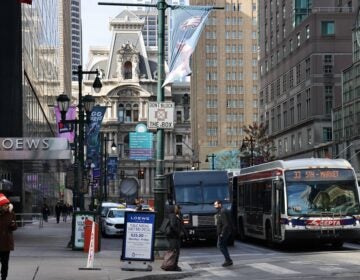Why Philadelphia’s sidewalks are so bumpy
In nearly every one of Philadelphia’s older neighborhoods you will find the same thing – bumpy, uneven sidewalks. At the root of the problem is someone’s inability to imagine that trees can last decades and that their roots are stronger than concrete.
As a kid growing up in Mt. Airy, this presented only minor challenges to my rugged Schwinn bicycle. In fact, it only added to the overall mystique of a very special place. For an adult however, the crevices do not always seem so charming. Who among us has not embarrassingly caught their heel on a crack and been sent stumbling, trying not to fall?
Philadelphia comedian David Brenner even did a routine about it on The Tonight Show back in the 1970’s. It was about the face-saving maneuvers one attempts after tripping, ranging from glaring menacingly at the offending crack to pretending that it never happened.
Of course, not everyone finds humor in the situation. A quick search of local community bulletin boards found posts like the following: “The sidewalks on the 500 block of east Brinton Street in Germantown are hazardous to myself and my neighbors. Lawsuits against the city will no doubt surface when people start to trip and fall.”
I wanted to find out what could or should be done about the problem, so I called my old friend Vladimir. He’s a local tree surgeon who climbs the old-fashioned way, with rope and harness, and he loves trees only slightly less than he loves the human race. I asked him how the sidewalk situation ever got so bad.
“When these trees were planted as saplings,” he said, “not much thought was given to size, shape, or rate of growth. Many of them are now between 90 and 120 years old. And when the houses were built, rubble was often dumped where the sidewalks are today. Between the curbstone and the extremely hard-packed soil, the roots have very little area in which to grow, but somehow they survive.”
“When masons are called in,” he went on, “they remove the root, but that seriously injures the tree. A better solution is to create a brick sidewalk around the roots, packed in sand rather than mortar. Rough edges would be worn down by people walking.” (The 400 block of Stafford Street in Germantown is an excellent example of the malleability of brick sidewalks.) Trees are not photographs,” Vlad concluded, his voice rising. “They’re three-dimensional, living things, and they are symbols of everything fresh, spontaneous, and unstoppable.”
I guess I’ve always taken these grand old trees for granted, but after listening to Vladimir, I found a new appreciation for them. So the people who planted them all those years ago didn’t think ahead.
So what? People never think ahead. That’s how we got global warming and national debt, but the trees should not have to pay for our mistakes. We shouldn’t just cut them down because they’re inconvenient.
Trees don’t ask for much – a little rain, a little sun – and they give us shade, oxygen, and wildlife habitat. They prevent erosion, and they actually increase property values. But most importantly,
they give us the kind of beauty that makes our neighborhood unique and livable. If you’re really that troubled by the bumpy sidewalks, I suggest you just tread very carefully, or maybe consider moving to Levittown.
Jim Harris is a columnist with the Chestnut Hill Local. His website is jimbobsjournal.com. jimbob@jimbobsjournal.com
WHYY is your source for fact-based, in-depth journalism and information. As a nonprofit organization, we rely on financial support from readers like you. Please give today.




